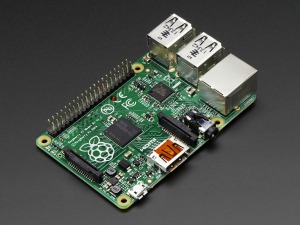 This weekend I found some time to fire up the Raspberry Pi model B+. I wanted to update the Arch Linux installation on it, and then I wanted to do some NodeJS Javascript programming after the system updates.
This weekend I found some time to fire up the Raspberry Pi model B+. I wanted to update the Arch Linux installation on it, and then I wanted to do some NodeJS Javascript programming after the system updates.
Unfortunately for me I couldn’t update Arch. The last time I updated Arch was back in October of 2014. Right after upgrading I created an image, zipped it up, and uploaded it to my Google Drive to share with all. After my failure to upgrade Arch I’ve deleted that image from Google Drive, and I’m now working exclusively with Raspbian Linux released December 2014.
In a way I’m actually glad to now be using Raspbian as opposed to Arch. All my other Linux-powered computers are running some variant of Debian, either Debian directly (Beagle Bone Black) or Ubuntu/Mint Linux (my notebook and virtual machines). While the GUIs might certainly differ, they’re pretty much the same down at the CLI level. Moving between the various machines isn’t as jarring when one of them is as different as Arch is.
The problem came when I tried to update Arch using ‘pacman -Syyu’. The update refused to execute, failing with some sort of version mismatch with pacman itself. After looking on various Arch forums and trying to use Google to find a solution, I decided that perhaps it was time to move over to Raspbian. And so I have. The only minor issues had to do with the Apple keyboard, and I’ve documented how to fix that with Arch. I’d already given an older version of Raspbian a dry run, and found that fixing the Apple keyboard for Arch was also the way to fix it for Raspbian.
I’m now in the process of getting my NodeJS environment rebuilt and getting ready to write some more controller software in Javascript. I’ll have more to post shortly.

You must be logged in to post a comment.